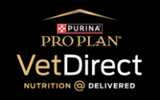STAGE 1 (PREPARATION: 2-6 hours)
During this stage the cow will swish the tail and will have small contractions that are spread apart. She may get up and down and separate herself from the herd. She may graze or eat some while she is up. She may kick at her abdomen with her back feet. This stage ends when the water bag is delivered and breaks. This is often the longest stage as the cervix dilates and the calf makes its way up and into the birth canal. We are guilty of getting impatient at this stage.
STAGE 2 (DELIVERY: Cows 0.5-1.0 hour; Heifers up to 2 hours)
Once the water breaks, a good thumb rule is to set a clock and note where things are (do I see the calf’s feet, nose, and how much of them?), leave the cow alone and check on her again in 20-30 minutes to see if there is any further progress. If the calf is not coming out any further, it’s time to call the vet to intervene.
STAGE 3 (CLEANING: 3-24 hours)
After the calf is born, the placenta or “afterbirth” may still be partially within the cow and hang from her vulva. As the calf nurses the cow, there is a release of oxytocin that will cause her to have more contractions to push this out. If it is still present there after 24 hours, we consider this retained. It is no longer recommended to pull the afterbirth out. The veterinarian may give her medications to promote contractions, flush the uterus out with fluid, and apply some light traction on the placenta while the cow delivers it. Pulling on afterbirth can cause uterine damage, hemorrhage, or leave behind remnants of the placenta that lead to infection. This can lead future issues with getting the cow bred back.

 Phone: (828) 738-3883 | Fax: (828) 270-3213 Email:
Phone: (828) 738-3883 | Fax: (828) 270-3213 Email: